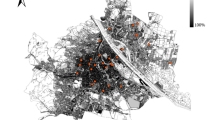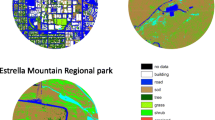Abstract
Dietary carotenoids are important pigments, antioxidants, and immune-stimulants for birds. Despite recent interest in carotenoids in bird ecology, we know surprisingly little about the carotenoid content of invertebrates consumed by birds. We compared carotenoid (lutein, β-carotene, and total) concentrations in invertebrates brought to nestlings by two insectivorous passerines, the great tit, Parus major and the pied flycatcher, Ficedula hypoleuca. We also compared carotenoid levels between environments that were either polluted by heavy metals or were not polluted, because the carotenoid-based plumage color of P. major nestlings is affected by environmental pollution. Lepidopterans were the most carotenoid-rich food items and contained the largest proportion of lutein. There were no differences in carotenoid concentrations in the food items of the two bird species but P. major nestlings obtained more carotenoids from their invertebrate diet than F. hypoleuca nestlings because the P. major diet had a higher proportion of lepidopteran larvae. In polluted areas, P. major nestlings consumed lower levels of dietary carotenoids than in unpolluted areas because of temporal differences in caterpillar abundance between polluted and unpolluted sites. Our study suggests that pollution-related difference in nestling plumage color in P. major is related to varying dietary proportion of lutein-rich food items rather than pollution-related variation in insect carotenoid levels.


Similar content being viewed by others
References
Biard, C., Surai, P. F., and Møller, A. P. 2006. Carotenoid availability in diet and phenotype of blue and great tit nestlings. J. Exp. Biol. 209:1004–1015.
Britton, G., Goodwin, T. W., Harriman, G. E., and Lockley, W. J. S. 1977. Carotenoids of ladybird beetle, Coccinella septempunctata. Insect Biochem. 7:337–345.
Brush, A. H. 1990. Metabolism of carotenoid in birds. FASEB J. 4:2969–2977.
Cramp, S., Perrins, C. M. 1993. The Birds of the Western Palearctic. Oxford University Press, Oxford.
Cumming, G. 2009. Inference by eye: Reading the overlap of independent confidence intervals. Stat. Med. 28:205–220.
Eeva, T., Lehikoinen, E., and Pohjalainen, T. 1997. Pollution-related variation in food supply and breeding success in two hole-nesting passerines. Ecology 78:1120–1131.
Eeva, T., Lehikoinen, E., and Rönkä, M. 1998. Air pollution fades the plumage of the great tit. Funct. Ecol.12:607–612.
Eeva, T., Ryömä, M., and Riihimäki, J. 2005. Pollution-related changes in diets of two insectivorous passerines. Oecologia 145:629–639.
Eeva, T., Sillanpää, S., Salminen, J.-P., Nikkinen, L., Tuominen, A., Toivonen, E., Pihlaja, K., and Lehikoinen, E. 2008. Environmental pollution affects the plumage color of great tit nestlings through carotenoid availability. EcoHealth 5:328–337.
Eeva, T., Sillanpää, S., and Salminen, J.-P. 2009. The effects of diet quality and quantity on plumage colour and growth of great tit nestlings: a food manipulation experiment along a pollution gradient. J. Avian Biol. 40:1–9.
Goodwin, T.W. 1986. Metabolism, nutrition, and function of carotenoids. Annu. Rev. Nutr. 6:273–297.
Heliövaara, K., Väisänen, R. 1990. Air pollution levels and abundance of forest insects, pp. 447–467, in: P. Kauppi (ed.). Acidification in Finland. Springer-Verlag, Berlin, Heidelberg
Hidalgo, A. and Brandolini, A. 2008. Kinetics of carotenoids degradation during the storage of einkorn (Triticum monococcum L. ssp monococcum) and bread wheat (Triticum aestivum L. ssp aestivum) flours. J. Agric. Food Chem. 56:11300–11305.
Hill, G. E. and McGraw, K. J. 2006. Bird Coloration II Function and Evolution. Harvard University Press, Cambridge, Massachusetts
Hornung, R. W. and Reed, L. D. 1990. Estimation of average concentration in the presence of nondetectable values. Appl. Occupat. Environ. Hygiene 5:46–51.
Isaksson, C. and Andersson, S. 2007. Carotenoid diet and nestling provisioning in urban and rural great tits Parus major. J. Avian Biol. 38:564–572.
Jussila, I. and Jormalainen, V. 1991. Spreading of heavy metals and some other air pollutants at Pori-Harjavalta district in SW-Finland. SYKEsarja B 4:1–58.
Kiikkilä, O. 2003. Heavy-metal pollution and remediation of forest soil around the Harjavalta Cu-Ni smelter, in SW Finland. Silva Fenn. 37:399–415.
Martens, S. N. and Boyd, R. S. 1994. The ecological significance of nickel hyperaccumulation—a plant-chemical defense. Oecologia 98:379–384.
McGraw, K. J. 2005. Interspecific variation in dietary carotenoid assimilation in birds: Links to phylogeny and color ornamentation. Compar. Biochem. Physiol. B-Biochem. Mol. Biol. 142:245–250.
McGraw, K. J. 2006. Mechanics of carotenoid-based coloration, pp. 177–242, in G. E. Hill, K. J. McGraw (eds.). Bird Coloration I Mechanisms and Measurements. Harvard University Press, Cambridge, Massachusetts.
Partali, V., Liaaen-Jensen, S., Slagsvold, T., and Lifjeld, J. T. 1985. Carotenoids in food chain studies-II. The food chain of Parus spp. monitored by carotenoid analysis. Compar. Biochem. Physiol. B—Compar. Biochem. Mol. Biol. 82:767–772.
Ruohomäki, K., Kaitaniemi, P., Kozlov, M., Tammaru, T., and Haukioja, E. 1996. Density and performance of Epirrita autumnata (Lepidoptera: Geometridae) along three air pollution gradients in northern Europe. J. Appl. Ecol. 33:773–785.
Sas Institute 2003. The SAS System for Windows. Release 9.1. SAS Inst., Cary, NC.
Sillanpää, S., Salminen, J.-P., Lehikoinen, E., Toivonen, E., and Eeva, T. 2008. Carotenoids in a food chain along a pollution gradient. Sci. Total Environ. 406:247–255.
Sillanpää, S., Salminen, J.-P., and Eeva, T. 2009. Breeding success and lutein availability in great tit (Parus major). Acta Oecol. 35:805–810.
Slagsvold, T. and Lifjeld, J. T. 1985. Variation in plumage colour of the great tit Parus major in relation to habitat, season and food. J. Zool. (London) 206:321–328.
Surai, P. F., Speake, B. K., and Sparks, N. H. C. 2001. Carotenoids in avian nutrition and embryonic development. 1. Absorption, availability and levels in plasma and egg yolk. J. Poult. Sci. 38:1–27.
Tummeleht, L., Mägi, M., Kilgas, P., Mänd, R., and Hõrak, P. 2006. Antioxidant protection and plasma carotenoids of incubating great tits (Parus major L.) in relation to health state and breeding conditions. Comp. Biochem. Physiol. C-Toxicol. Pharmacol. 144:166–172.
Acknowledgements
We thank Jorma Nurmi, Mari Ryömä, and Janne Riihimäki for participating in field work, and Terhi Sundman for help in carotenoid analyses. Anssi Teräs, Antti Haarto, Seppo Koponen, Veikko Rinne, Kai Ruohomäki, Ilari Sääksjärvi, and Jouni Sorvari identified the invertebrate samples. Eric Le Tortorec revised the English in the manuscript. Two anonymous referees gave valuable comments on the manuscript. This study was financially supported by the Academy of Finland (TE: project number 8119367) and Finnish Cultural Foundation (SH).
Author information
Authors and Affiliations
Corresponding author
Rights and permissions
About this article
Cite this article
Eeva, T., Helle, S., Salminen, JP. et al. Carotenoid Composition of Invertebrates Consumed by Two Insectivorous Bird Species. J Chem Ecol 36, 608–613 (2010). https://doi.org/10.1007/s10886-010-9796-0
Received:
Revised:
Accepted:
Published:
Issue Date:
DOI: https://doi.org/10.1007/s10886-010-9796-0




